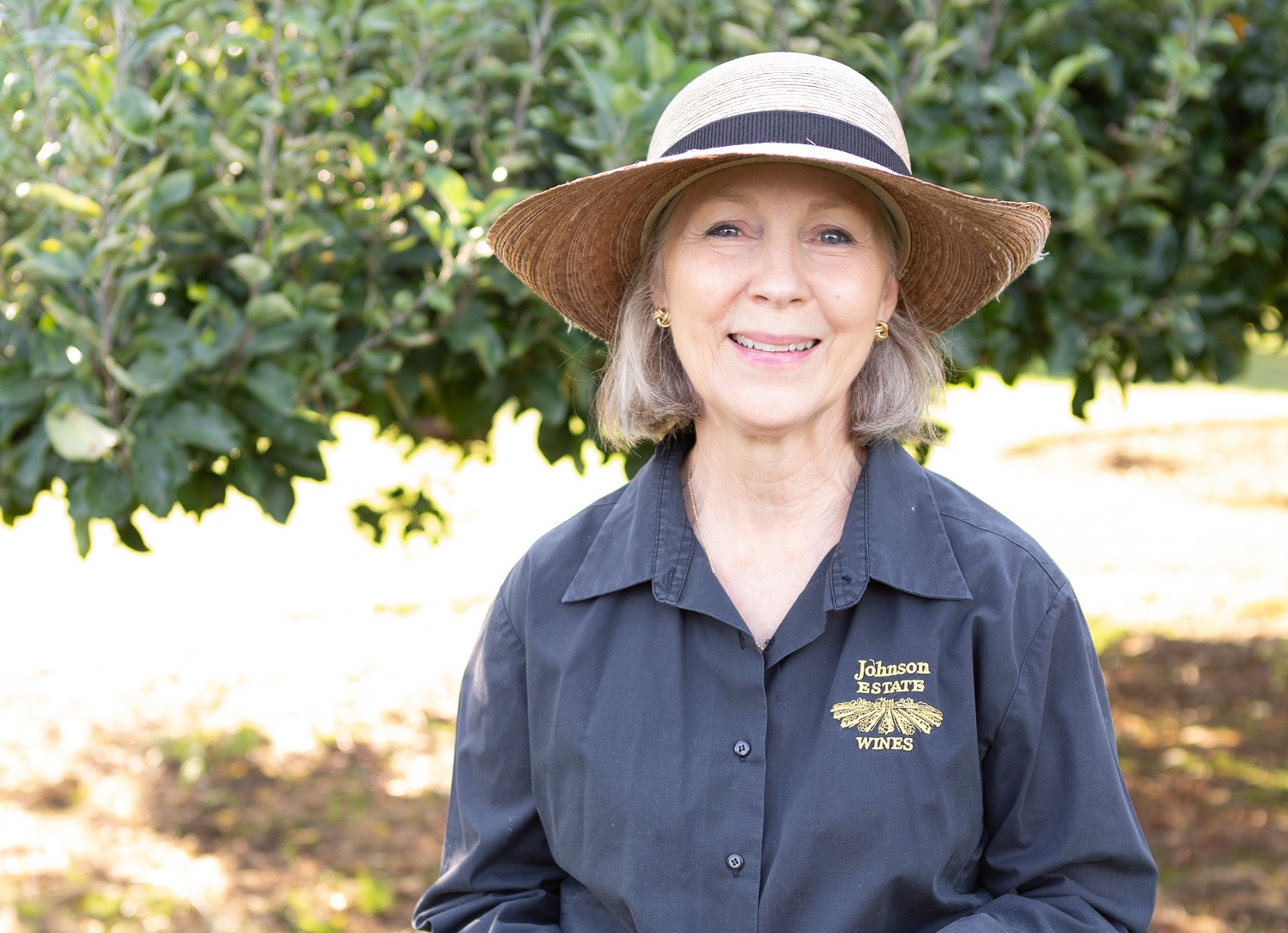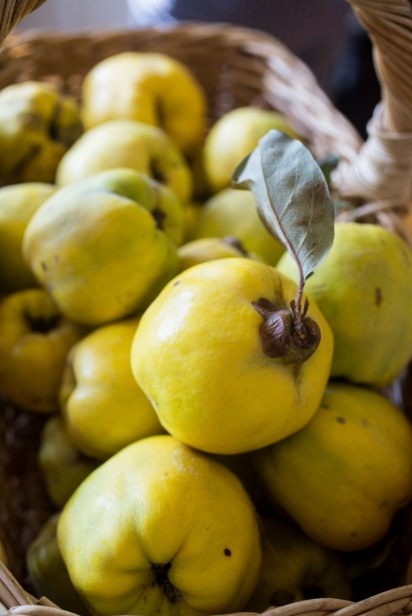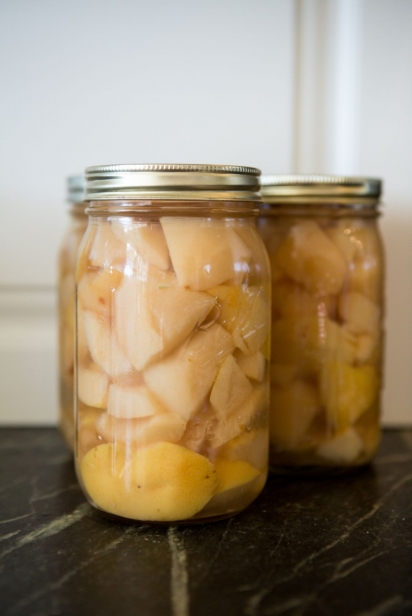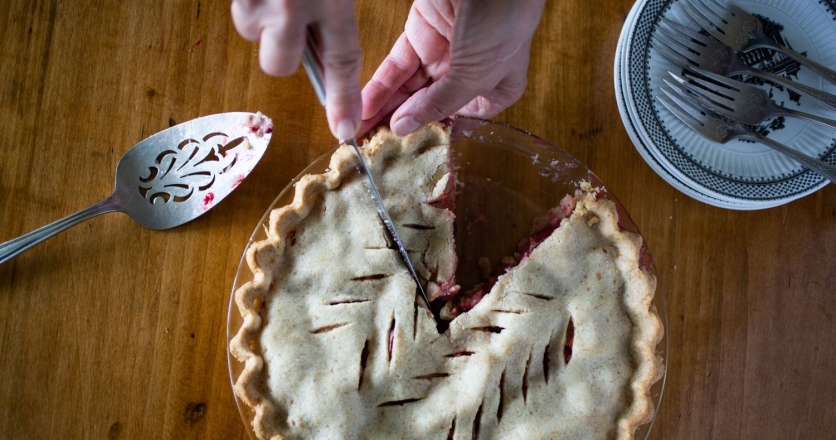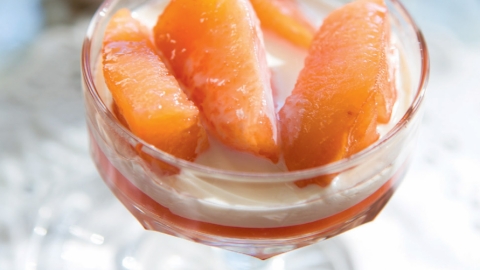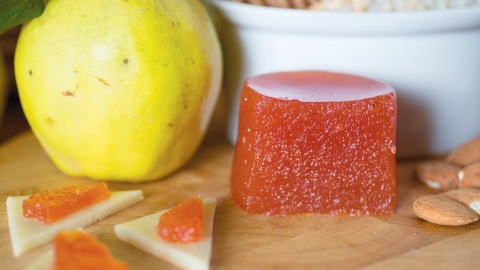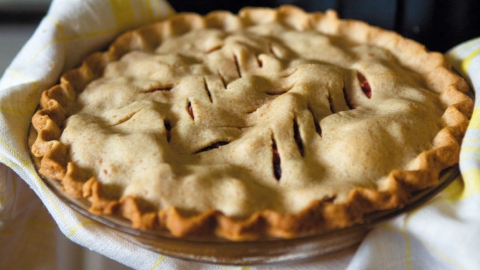Jennifer Johnson: Refined by Nature and Nurture
It used to be that children, daughters especially, learned cooking skills from their mothers and grandmothers. Jennifer Johnson, co-owner of Johnson Estate Winery in Westfield, learned from many elders—mothers, fathers, grandparents, friends and teachers. But, as her husband, Frederick Johnson Jr., exclaims, Jennifer’s hospitality and gardening talents are “innate.” Life circumstances and experiences on the farm just offered opportunities to let them flourish.
A military brat and semi-Southern belle (she spent much of her childhood in Virginia when not in Germany or Guam), Jennifer was the oldest of three children. From her father, a former master sergeant of German descent who grew up on a wheat farm in Kansas, she gleaned an awareness about canning food as well as how to make pulled pork and coleslaw. Her maternal grandmother taught her to make jams, while her mother, a native of Alabama, showed her how to cook with fresh vegetables, make apple pie and try new things. And from Cecily Johnson, her mother-in-law, she learned how to organize and prepare food for large gatherings. She also acquired the skills to make wheat bread, a specialty of Cecily’s, who often gave it as a Christmas gift along with a bottle of wine. “Cecily claimed that she wasn’t a great cook,” said Jennifer, “but she knew how to do it well and efficiently. She was smart, and she always stayed calm.”
Spending a summer in France as an au pair during her junior year at William and Mary, Jennifer also came to appreciate all things French, including pretty tarts made with custard and topped with fresh fruit.
A trip to Westfield to visit her soon-to-be in-laws introduced Jennifer to the intricacies of Cecily Johnson’s culinary and hospitality world. Married to a former WWII torpedo bomber pilot and second-generation fruit farmer, Cecily regularly cooked for groups and was influenced by her good friend, Elaine Laughlin, a cookbook author and instructor at the nearby Chautauqua Institution.
If you have ever been to a dinner or event at Johnson Estate Winery, you will be familiar with Jennifer’s consummate hospitality and culinary skills. She lends bits of tasty art to each event, which might include quince paste, pear cardamom sauce, onion tart, French crepes, oregano pesto with homemade crackers or smoked whitefish dip. The experience is about feeling welcome whether you are by yourself, half of a pair or with a group. It’s almost a given that you will meet new people, try new foods, feel like an intimate part of a large family gathering and leave wonderfully satiated.
For a Christmas gift a few years ago, Jennifer attended a class in South Carolina with Matt and Ted Lee, authors of several Southern cookbooks. An amateur student among culinary industry professionals, her learning continued. She returned home inspired to write her own cookbook based on her experiences at the family farm. While the cookbook is still in the works, she continues to experiment with new flavors and treats.
I have had the privilege of participating in various tastings, wine pairings and farm-to-table dinners at the winery over the past several years and am excited that Jennifer has agreed to preview some of her recipes with Edible Western NY readers.
THE STORY OF QUINCE
Quince trees were traditionally grown in English and colonial gardens. High in pectin, the fruit was used to make jams and jellies. In the Johnson household, poached quince, similar to poached apple, was a family favorite—the recipe and technique handed down through the generations. Quince ripens in October. On the outside, it resembles a pear while the inside looks like an apple. When cooked with sugar, it turns bright pink or orange. Poached quince is sweet and tart and served warm in a sugar syrup with heavy cream poured over the top. In Spain, quince paste is called membrillo and traditionally served with Manchego cheese. According to Jennifer, it also pairs well with goat cheese, sharp cheddar and other hard cheeses. While quince orchards are rare in Western New York as the trees are subject to fire blight, a bacterium that attacks pome trees such as apples and pears, a few trees still remain at the Johnson farm.
THE APPLE AND FRUIT FARM
The Johnson family farm has evolved over several generations. The current tasting room for Johnson Estate Winery was once the cold storage cellar where apples were kept through the winter and shipped by train to New York City. Run by Fred’s grandfather, Frederick William Johnson (1877–1960), the farm grew apples, cherries, peaches, pears and grapes including Concord, Catawba, Niagara and Aurora. While wine vineyards now dominate the farm’s acreage, a few of the apple trees remain and Jennifer makes use of the Granny Smith, McIntosh, Rome and Northern Spy varieties that still grow in preparing her recipes.


